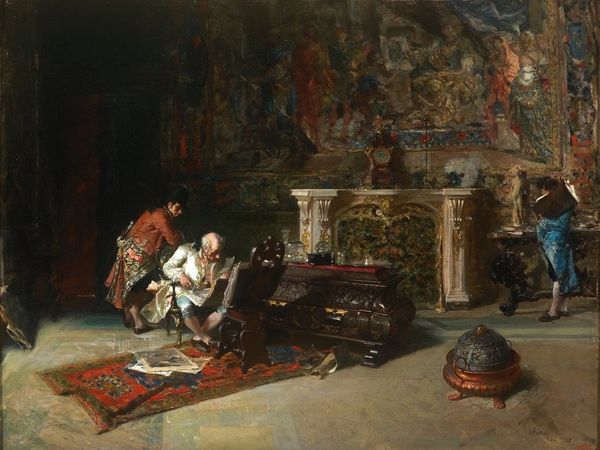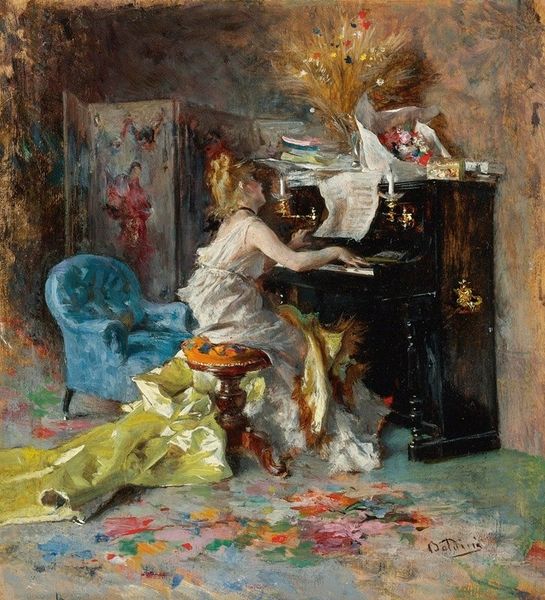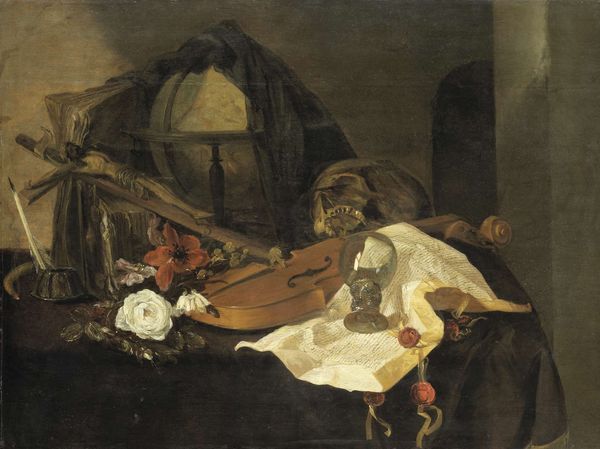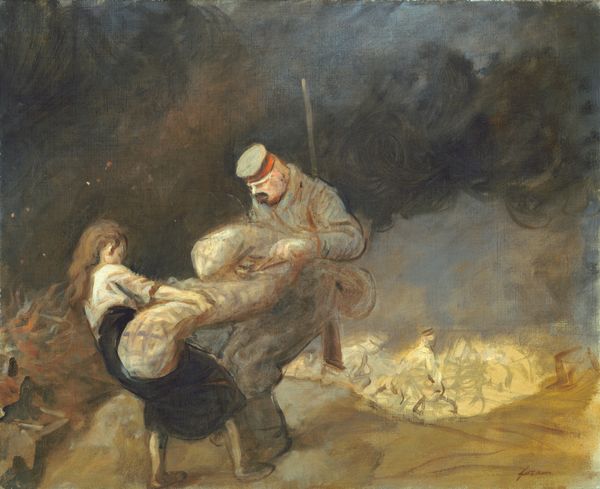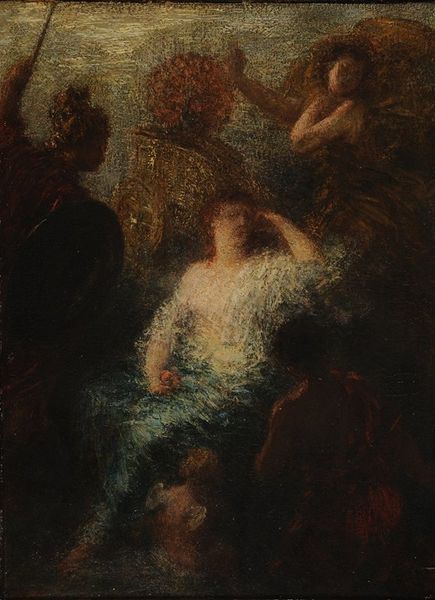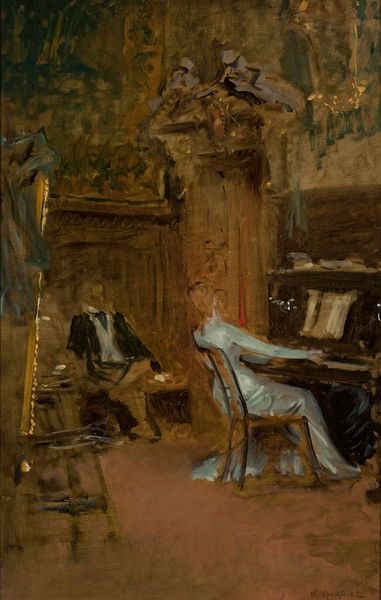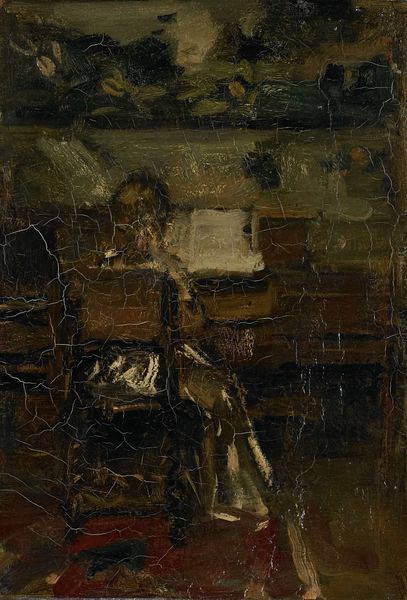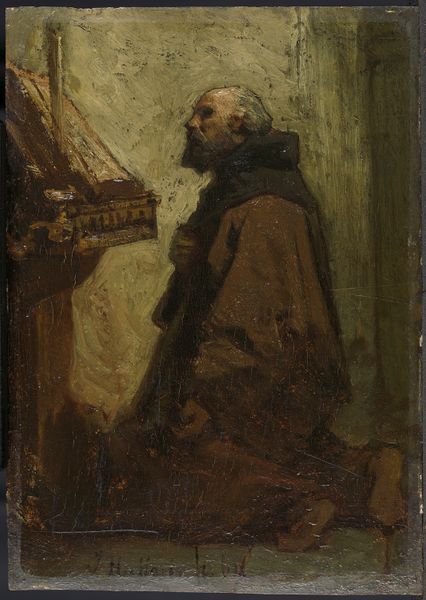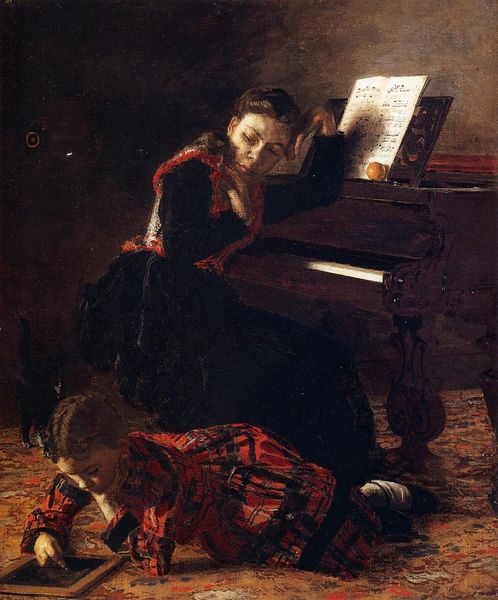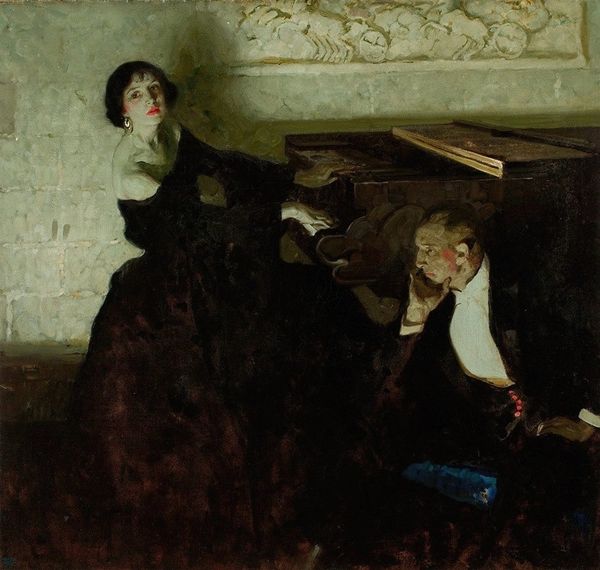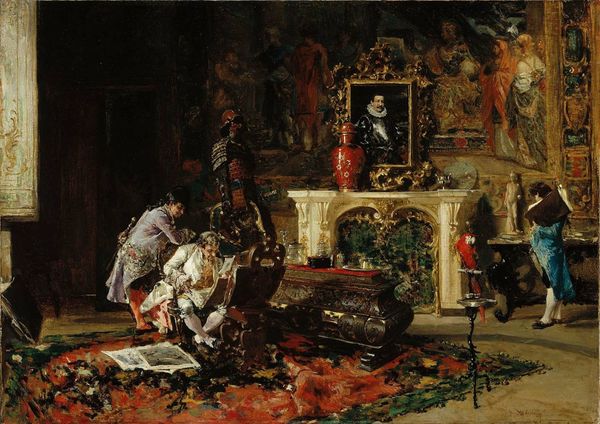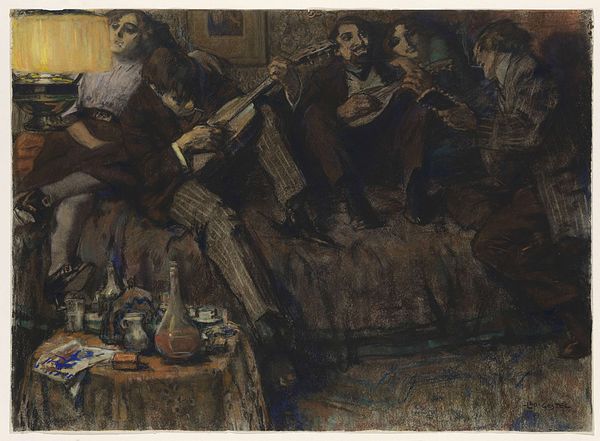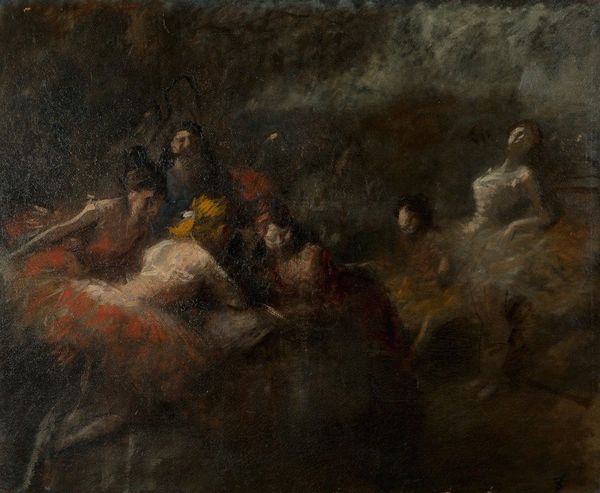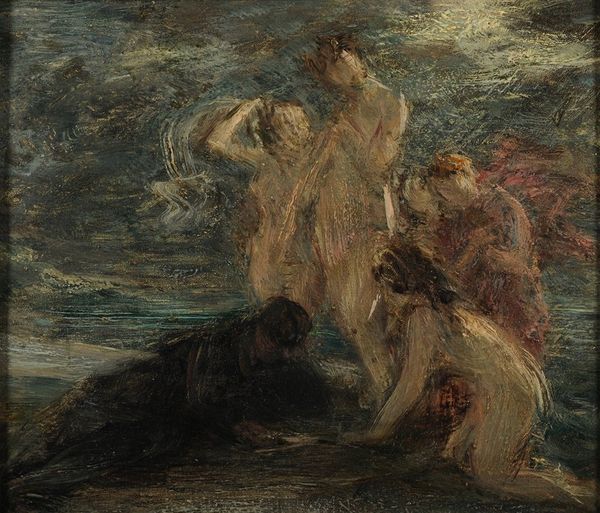
Copyright: Public domain
Editor: So, this is Mariano Fortuny's "Fantasy about Faust," painted in 1866 using oil paint. I'm struck by how dreamlike it feels, like we're peering into the musician’s imagination, this duality between reality and hallucination. What do you see in this piece? Curator: It’s precisely that duality that fascinates me. Note how Fortuny juxtaposes the tangible setting, complete with observers, against the spectral figures looming above the pianist. The Faustian legend, deeply embedded in European cultural memory, deals with themes of knowledge, power, and ultimately, the devil. Editor: Yes, Faust selling his soul for knowledge, very dramatic. What is the meaning of those carnival figures? Curator: The figures introduce us to commedia dell'arte tropes. Their presence links Faust’s story with satire and farce, injecting layers of irony. These aren't just characters; they are symbols drawn from a rich cultural lexicon, reflecting on ambition, pleasure, and perhaps, self-deception. How do you feel this impacts the overall meaning? Editor: I see. So it’s not a straightforward good versus evil, but something more ambiguous about human desire and societal commentary? The musician's bent head indicates to me intense creativity but also a potential vulnerability. Curator: Indeed. The power of the artist lies in the ability to externalize their interiority. Fortuny gives the story psychological dimension. Ultimately, the image reflects how cultural symbols create layers of understanding between artwork and audience. Editor: This has really made me see the painting as a symbolic exploration of the creative mind rather than just a historical reference. Thank you! Curator: The pleasure was all mine, uncovering shared memories in paint.
Comments
No comments
Be the first to comment and join the conversation on the ultimate creative platform.
